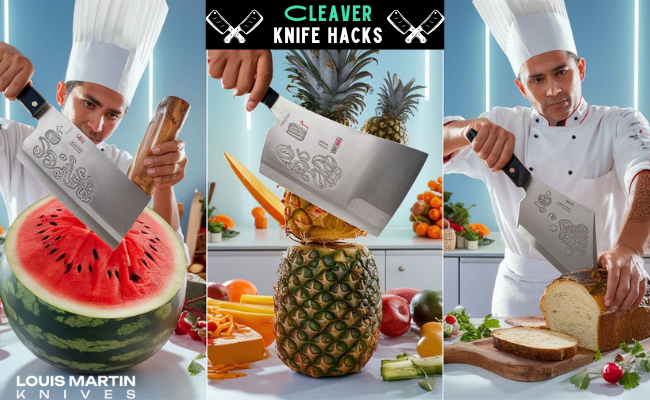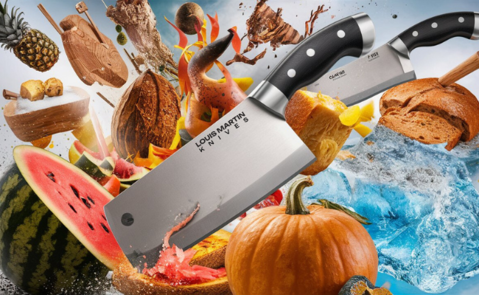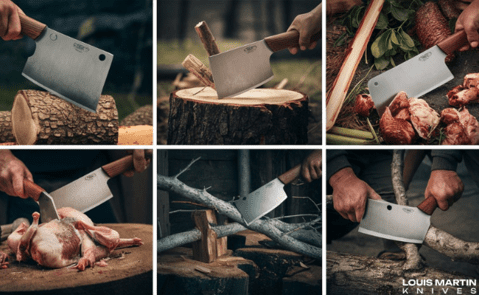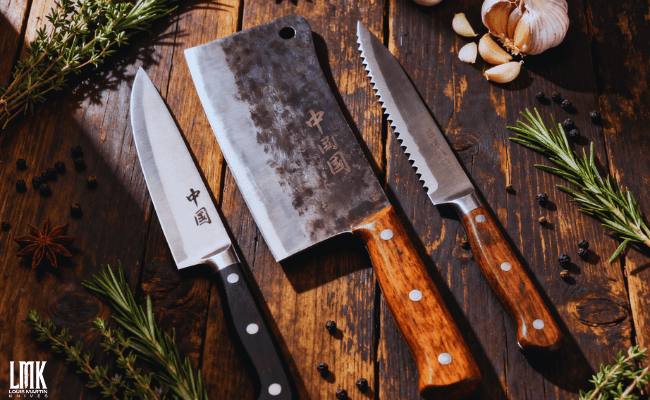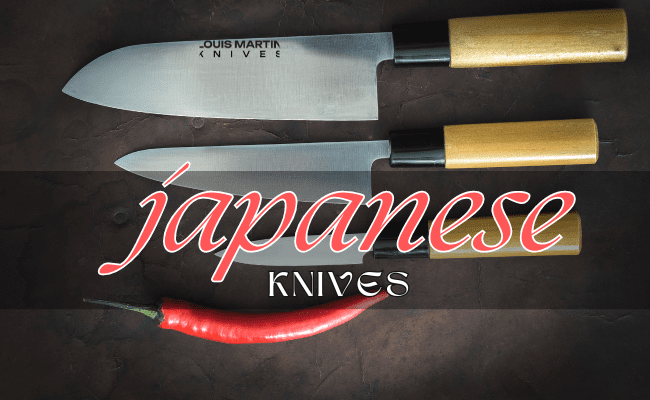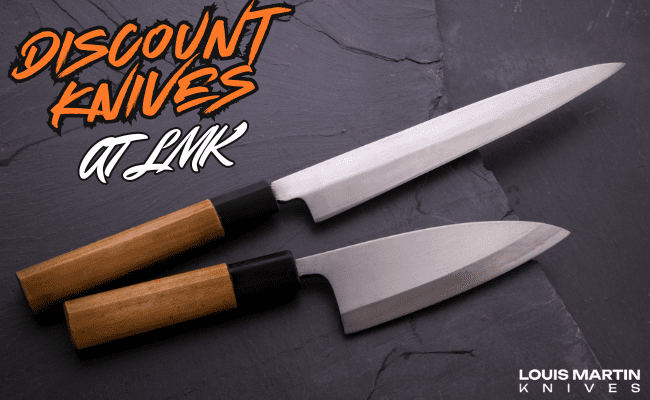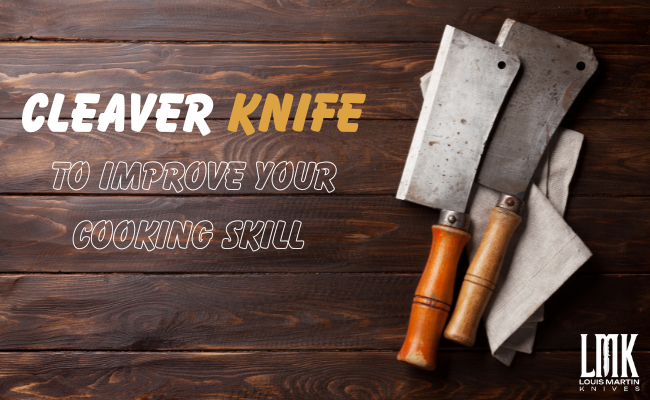Ever pictured a cleaver knife? You might imagine robust chopping, cutting thick chunks of meat, or maybe a quick-moving butcher’s knife. But what if the Best Cleaver Knife isn’t only for meat? It could be your all-around utensil for many tasks, inside and outside the kitchen. From unique veggie cuts to outdoor survival tricks, the best cleaver knife has more uses than you may believe.
Whether it’s a traditional cleaver chef knife, a compact folding cleaver knife, or a finely crafted Japanese cleaver knife, these blades can do much more than you might expect. Let’s explore some creative and unconventional ways to use your cleaver knife to make you see this kitchen tool in a new light.
Discover the versatility of cleaver knives beyond just cutting meat. In this guide by Handmade Knives, we explore creative and unconventional hacks that turn your cleaver into a multi-functional tool for both kitchen and outdoor use.
Brief Overview of the Versatility of Cleaver Knives
Cleaver knives are known for being strong and lasting. These knives, with their thick, wide blades, are great for tough jobs. They can cut through bones, meat, and sturdy vegetables easily. While regular kitchen knives aren’t designed for hard work, cleaver knives are. They are crucial tools for any cook. But, that’s not all. Cleavers handle more than just meat cutting. Their large, flat surface, sharp sides, and considerable heft open doors to numerous uses. They handle kitchen tasks and other, non-cooking chores, too.
Beyond Meat: Creative Vegetable Cutting
Precision Dicing of Large Vegetables
Big veggies such as squash, pumpkins, or cabbage? Your cleaver knife does the trick! Its big blade is superfast and on-the-dot for cutting, turning big veggies into little pieces without a hitch. Thanks to the cleaver’s weight, slicing through hard skin and thick veggie “meat” is a piece of cake.
Creating Decorative Cuts
Ever feel like sprucing up your plate presentations? Well, a cleaver knife could be your new best friend. You can use its broad blade to make accordion potatoes or twisty veggie spirals. Tap into the cleaver’s sharp edge, manage your shopping wisely, and behold! Stunning, even slices to elevate your food display. Ideal for those times when you need to wow your guests with your food arrangement expertise.
Crushing Garlic and Herbs
The flat side of the cleaver chef knife is perfect for crushing garlic and herbs. Instead of using a separate tool like a garlic press, simply place the garlic clove or herbs on a cutting board and press down firmly with the flat side of the cleaver. This method releases the flavors and oils quickly and efficiently, allowing you to add a burst of flavor to your dishes without the extra cleanup.
Unconventional Kitchen Tasks
Tenderizing Meat
One of the lesser-known uses of the top cleaver knife is tenderizing meat. The flat, heavy side of the cleaver is ideal for this task, allowing you to tenderize tough cuts of meat without needing a separate mallet. Simply pound the meat with the flat side of the cleaver, breaking down the muscle fibers and making the meat more tender and flavorful.
Cracking Nuts and Shells
The weight and thickness of a folding cleaver knife make it perfect for cracking open nuts or shellfish. Whether you’re trying to crack walnuts or open a lobster shell, the cleaver’s heavy blade can handle the job with ease. Just place the nut or shell on a hard surface and give it a firm tap with the cleaver you’ll have access to the tasty insides in no time.
Flattening and Shaping
Need to roll out dough or mold meat patties? A cleaver is your friend. Its wide, level surface is just right for helping dough or meat reach a uniform thickness. Great for crafting homemade burgers or readying dough for the oven. Remember to keep your cleaver spick-and-span clean before and after each use, we don’t want any cross-contamination!
Cleaver Chopper
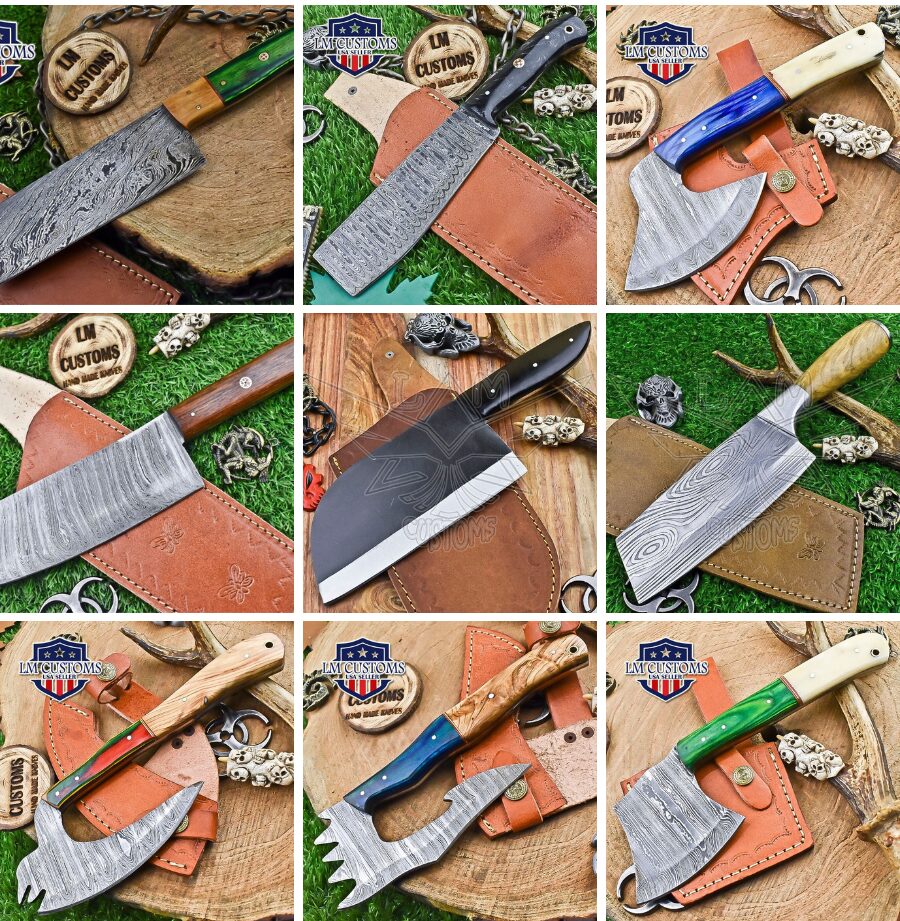
Household Hacks
Splitting Small Bones and Joints
Need to roll out dough or mold meat patties? A cleaver is your friend. Its wide, level surface is just right for helping dough or meat reach a uniform thickness. Great for crafting homemade burgers or readying dough for the oven. Remember to keep your cleaver spick-and-span before and after each use, we don’t want any cross-contamination!
Slicing Through Frozen Foods
Have you ever struggled to slice through partially frozen meats or other frozen foods? The Japanese cleaver knife’s thick blade and heavy weight make it ideal for this task. You can slice through frozen foods quickly and efficiently without damaging the blade, unlike with thinner, more delicate knives.
DIY Kitchen Tool
In a pinch, your cleaver can also double as a makeshift kitchen tool. Need to scoop up chopped vegetables or herbs? Use the broad side of the cleaver as a scoop to transfer them to a pot or pan. This hack saves you time and reduces the number of dishes you need to clean up afterward.
Outdoor and Survival Uses
Campfire Cooking
Love cooking outside? The leading cleaver knives are your best friends! It does everything, from cutting wood for the fire to preparing your meal. Meat and veggies are no problem. Even need a quick flip? The flat side can be your spatula. This cleaver is up to the task of camping or outdoor grilling. It’s so handy, it’s a must-have!
Cleaver as a Multi-Tool
The cleaver knife can also serve as a multi-tool in survival situations. Need to split small logs, dig a shallow trench, or even hammer in a tent stake? The cleaver can do it all. Its robust design makes it a reliable tool for a wide range of outdoor tasks, from the mundane to the critical.
Preparing Game or Fish
For those who hunt or fish, a cleaver knife is an excellent tool for preparing your catch. Whether you need to gut a fish, split open game, or portion out meat, the cleaver’s sharp blade and heavy weight make quick work of these tasks. A Japanese cleaver knives is particularly well-suited for this due to its sharpness and precision, which allow for cleaner cuts and better preservation of the meat.
Cleaver Knife Maintenance for Unconventional Uses
Proper Cleaning After Heavy-Duty Use
After using your cleaver knife for heavy-duty tasks, it’s important to clean it properly to maintain its performance and longevity. Make sure to wash the blade with warm, soapy water and dry it thoroughly to prevent rusting. If you’ve used the cleaver for particularly tough tasks like cracking nuts or bones, inspect the blade for any nicks or dull spots and address them promptly.
Sharpening and Honing Tips
To keep your cleaver knife in top shape, regular sharpening and honing are essential. Use a sharpening stone or honing rod to maintain a sharp edge, especially after using the cleaver for tasks that could dull the blade, like cutting through bones or frozen foods. A well-maintained cleaver will not only perform better but also last longer, making it a valuable investment for your kitchen.
Conclusion
The best cleaver knife is far more than just a tool for butchering meat. Whether you’re dicing vegetables, cracking nuts, preparing for a camping trip, or even tackling some outdoor survival tasks, the cleaver can handle it all. Its versatility makes it an indispensable tool in any kitchen or outdoor kit. So the next time you reach for your cleaver chef knife, folding cleaver knife, or Japanese cleaver knife, remember that its potential goes far beyond what you might have initially thought. Don’t be afraid to experiment and discover your cleaver knives hacks; you might just find a new favorite use for this incredibly versatile tool.
Frequently Asked Questions (FAQs)
1. Can a cleaver knife be used for delicate tasks like slicing vegetables thinly?
Yes, a cleaver knife can be surprisingly effective for delicate tasks like slicing vegetables thinly. While it’s known for its power in chopping, its sharp edge can be used to create precise, thin slices of vegetables like cucumbers, tomatoes, or even onions. The key is to use controlled, even pressure, allowing the weight of the knife to do most of the work.
2. How do I maintain the sharpness of my cleaver knife after heavy use?
To maintain the sharpness of your cleaver knife, it’s important to regularly sharpen and hone the blade. After heavy use, such as cutting through bones or cracking nuts, you should use a sharpening stone to restore the blade’s edge. Additionally, honing the knife with a honing rod before and after use helps keep the edge aligned and sharp. Always clean and dry your cleaver thoroughly after each use to prevent rust and other damage.
